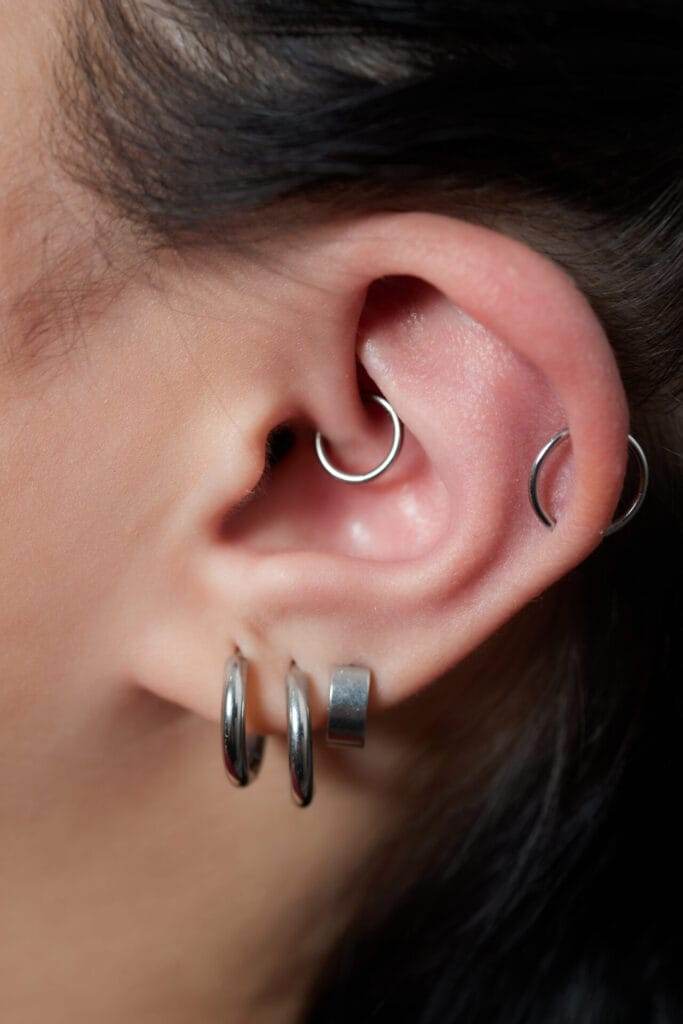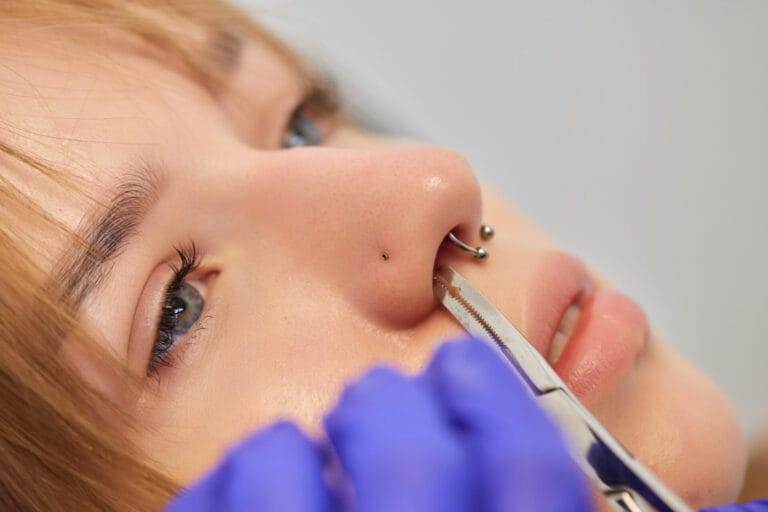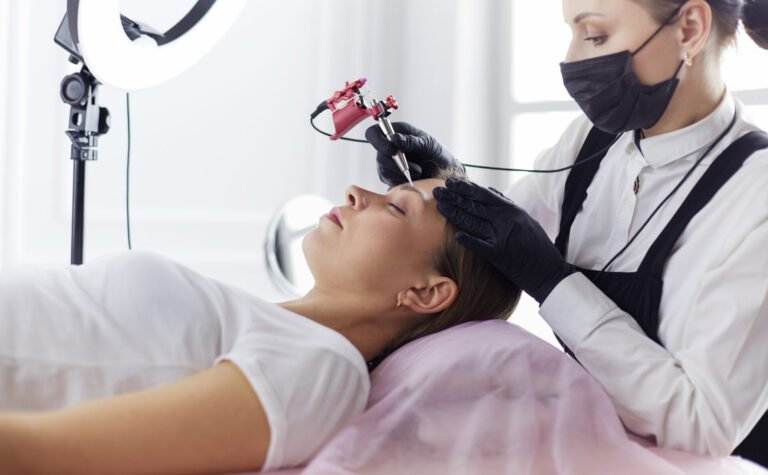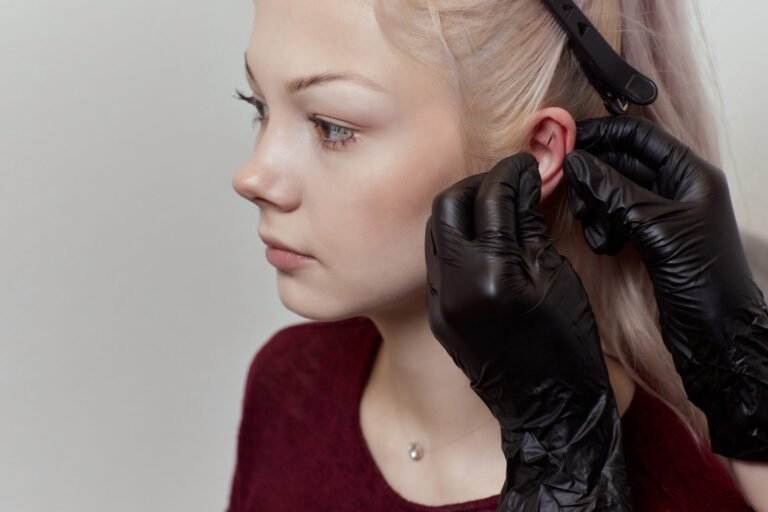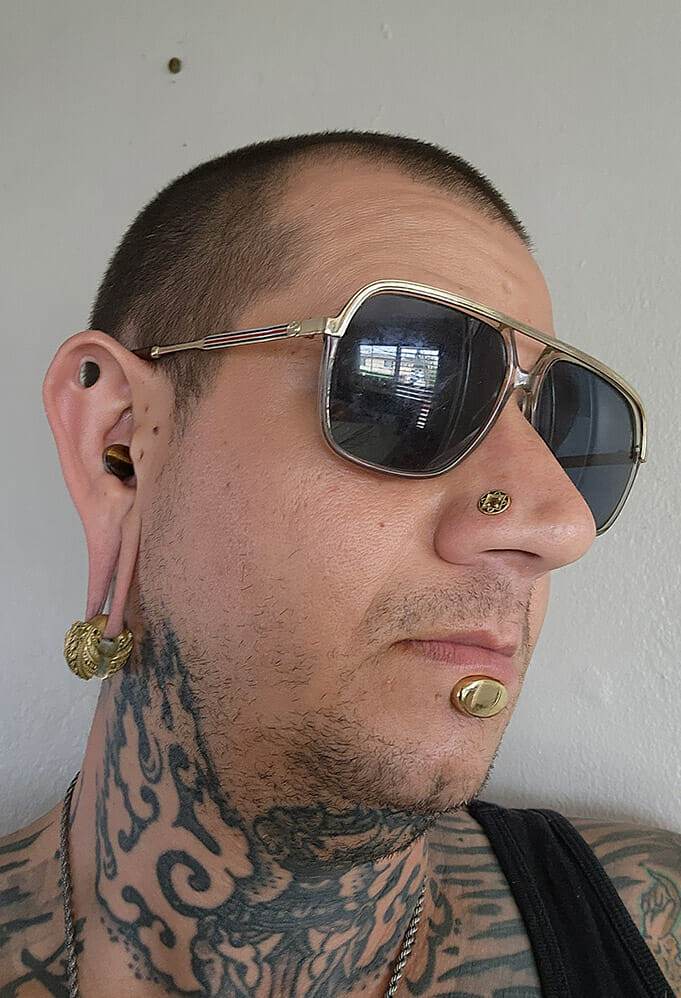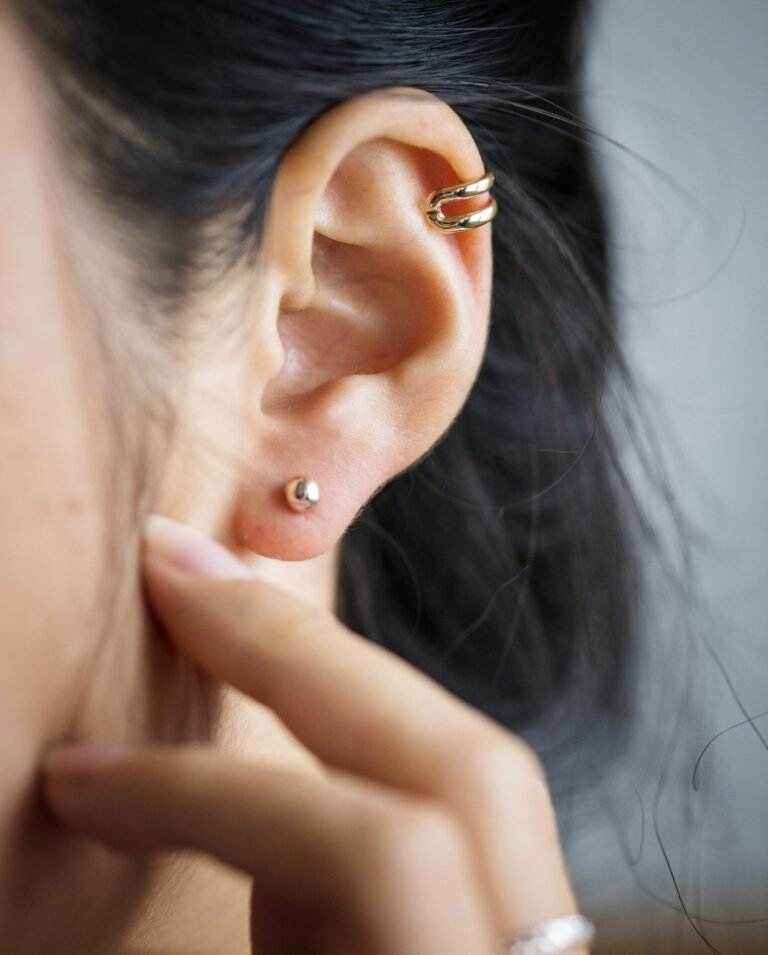Piercing is the practice of creating an opening in the body for the purpose of wearing jewelry. It has been a part of human culture for thousands of years, with evidence of piercings dating back to ancient civilizations such as the Egyptians and Romans. Today, piercing is a popular form of self-expression and body modification.
There are many different types of piercings that can be done on various parts of the body. Some common types include earlobe piercings, nose piercings, lip piercings, eyebrow piercings, and belly button piercings. Each type of piercing has its own unique style and placement, allowing individuals to choose a piercing that suits their personal taste.
The Importance of Proper Technique in Piercing
Proper technique is crucial when it comes to piercing. Improper technique can lead to a variety of risks and complications, including infection, scarring, and nerve damage. It is essential for piercers to have a thorough understanding of anatomy and proper sterilization techniques.
Sterilization is one of the most important aspects of piercing. All tools and equipment used in the piercing process must be properly sterilized to prevent the spread of bacteria and other pathogens. This includes using autoclaves to sterilize instruments and ensuring that all jewelry is made from high-quality materials that can be properly sterilized.
Piercers should also undergo training and certification to ensure they have the necessary knowledge and skills to perform piercings safely. This includes learning about proper technique, anatomy, aftercare, and infection control. Certification programs are available through professional organizations such as the Association of Professional Piercers (APP), which sets standards for safe piercing practices.
The Latest Tools and Equipment for Piercing
Advancements in technology have led to the development of modern piercing tools and equipment that make the process safer and more efficient. One example is the use of disposable needles, which greatly reduces the risk of infection. These needles are single-use and are discarded after each piercing, eliminating the need for sterilization.
Another advancement is the use of piercing guns, which allow for quick and easy piercing of the earlobe. These guns use a spring-loaded mechanism to quickly insert the jewelry into the earlobe. However, it is important to note that piercing guns should only be used for earlobe piercings and not for other types of piercings, as they can cause more trauma to the tissue.
Safety features have also been incorporated into modern piercing tools. For example, some needles have a safety cap that covers the sharp end, reducing the risk of accidental injury. Additionally, some piercing tools have built-in LED lights to provide better visibility during the piercing process.
Choosing the Right Jewelry for Your Piercing
Choosing the right jewelry for your piercing is essential for both comfort and healing. There are many different types of jewelry materials to choose from, including surgical steel, titanium, gold, and bioplast. It is important to choose a material that is hypoallergenic and suitable for long-term wear.
Sizing and fitting considerations are also important when choosing jewelry for a piercing. The jewelry should be the appropriate size and gauge for the specific piercing. If the jewelry is too small or too large, it can cause discomfort and increase the risk of complications.
Different types of piercings may require different types of jewelry. For example, a nose piercing may require a stud or a hoop, while an earlobe piercing may require a simple earring. It is important to consult with a professional piercer to determine the best type of jewelry for your specific piercing.
Preparing the Skin for Piercing: Tips and Tricks
Proper skin preparation is essential before getting a piercing. This helps to reduce the risk of infection and ensures that the piercing heals properly. There are several techniques that can be used to prepare the skin for piercing.
One technique is to clean the area with an antiseptic solution, such as alcohol or iodine. This helps to remove any bacteria or dirt from the skin. It is important to use a clean cotton ball or swab and to avoid touching the area with your hands.
Proper hygiene is also important when preparing the skin for piercing. This includes washing your hands thoroughly with soap and water before touching the piercing site. It is also important to avoid touching the piercing with dirty hands or objects, as this can introduce bacteria and increase the risk of infection.
Before getting a piercing, clients should be provided with pre-piercing care instructions. This may include avoiding certain activities or substances that can interfere with the healing process, such as swimming in pools or using harsh skincare products. Following these instructions can help to ensure a successful piercing experience.
Numbing Techniques for a Painless Piercing Experience

For many people, the thought of getting a piercing can be intimidating due to the potential pain involved. However, there are numbing techniques that can be used to minimize discomfort during the piercing process.
One common numbing option is the use of topical anesthetics, such as lidocaine cream or gel. These products are applied to the skin before the piercing and help to numb the area. It is important to follow the instructions provided by the manufacturer and to consult with a professional piercer before using any numbing products.
Another option is the use of ice or cold packs to numb the area before the piercing. This can help to reduce pain and swelling during the procedure. It is important to wrap the ice or cold pack in a clean cloth before applying it to the skin to avoid direct contact with ice.
It is important to note that while numbing techniques can help to minimize pain during the piercing process, some discomfort may still be experienced. It is normal to feel a brief pinch or pressure during the piercing, but this should subside quickly.
The Art of Placement: Achieving the Perfect Positioning
The placement of a piercing is crucial for both aesthetics and functionality. There are several factors to consider when placing a piercing, including the anatomy of the area, the desired look, and the client’s preferences.
One important factor to consider is the anatomy of the area being pierced. Different parts of the body have different structures and tissues, and it is important to take these into account when determining the placement of a piercing. For example, a nose piercing should be placed in a location that avoids major blood vessels and nerves.
Techniques for achieving optimal placement vary depending on the type of piercing. For example, when placing an earlobe piercing, it is important to ensure that the hole is centered and symmetrical. This can be achieved by using a marking pen or a sterile needle to mark the desired placement before making the actual piercing.
Common mistakes to avoid when placing a piercing include placing it too close to the edge of a body part, placing it too deep or shallow, or placing it at an angle that is not flattering or comfortable for the client. It is important to take the time to carefully measure and mark the placement before making the piercing.
Aftercare: Essential Steps for a Successful Healing Process
Aftercare is an essential part of the piercing process and plays a crucial role in ensuring proper healing. It is important for clients to follow aftercare instructions provided by their piercer to minimize the risk of infection and other complications.
One important aspect of aftercare is keeping the piercing clean. This can be done by gently cleaning the area with saline solution or an antiseptic solution recommended by your piercer. It is important to avoid using harsh soaps or cleansers, as these can irritate the skin and delay the healing process.
It is also important to avoid touching the piercing with dirty hands or objects. This can introduce bacteria and increase the risk of infection. If you need to touch the piercing, make sure to wash your hands thoroughly with soap and water first.
In addition to keeping the piercing clean, it is important to avoid certain activities and substances that can interfere with the healing process. This may include avoiding swimming in pools or hot tubs, avoiding excessive sweating, and avoiding tight or restrictive clothing that can irritate the piercing.
Troubleshooting Common Piercing Problems
While proper aftercare can help to minimize the risk of complications, it is possible for problems to arise during the healing process. It is important to be aware of common piercing problems and know how to identify and address them.
One common problem is infection, which can occur if bacteria enters the piercing site. Signs of infection include redness, swelling, pain, and discharge. If you suspect that your piercing is infected, it is important to seek medical attention as soon as possible.
Another common problem is migration or rejection, which occurs when the body rejects the jewelry and pushes it out of the piercing site. Signs of migration or rejection include the jewelry becoming loose or moving around in the piercing. If you notice these signs, it is important to consult with your piercer to determine the best course of action.
Other common problems include keloids or hypertrophic scars, which are raised scars that can form around a piercing. These can be treated with topical creams or silicone sheets, but it is important to consult with a medical professional for proper diagnosis and treatment.
Advanced Techniques for Experienced Piercers
Experienced piercers have the opportunity to expand their skills and knowledge by learning advanced piercing techniques. These techniques allow piercers to offer a wider range of services and cater to clients with more specific needs and preferences.
One example of an advanced technique is dermal piercing, also known as microdermal or surface anchor piercing. This involves inserting a small anchor under the skin and attaching jewelry to it. Dermal piercings can be placed on various parts of the body, such as the chest, back, or face.
Another advanced technique is genital piercing, which involves piercing the genital area. This can include piercings such as the Prince Albert, which is a piercing that goes through the urethra and out the underside of the penis, or the clitoral hood piercing, which is a piercing that goes through the hood of the clitoris.
Expanding skills and knowledge through advanced techniques can benefit piercers by allowing them to offer more specialized services and attract a wider range of clients. It is important for piercers to receive proper training and certification in these techniques to ensure safe and effective results.
Professional Development: Continuing Education for Piercers
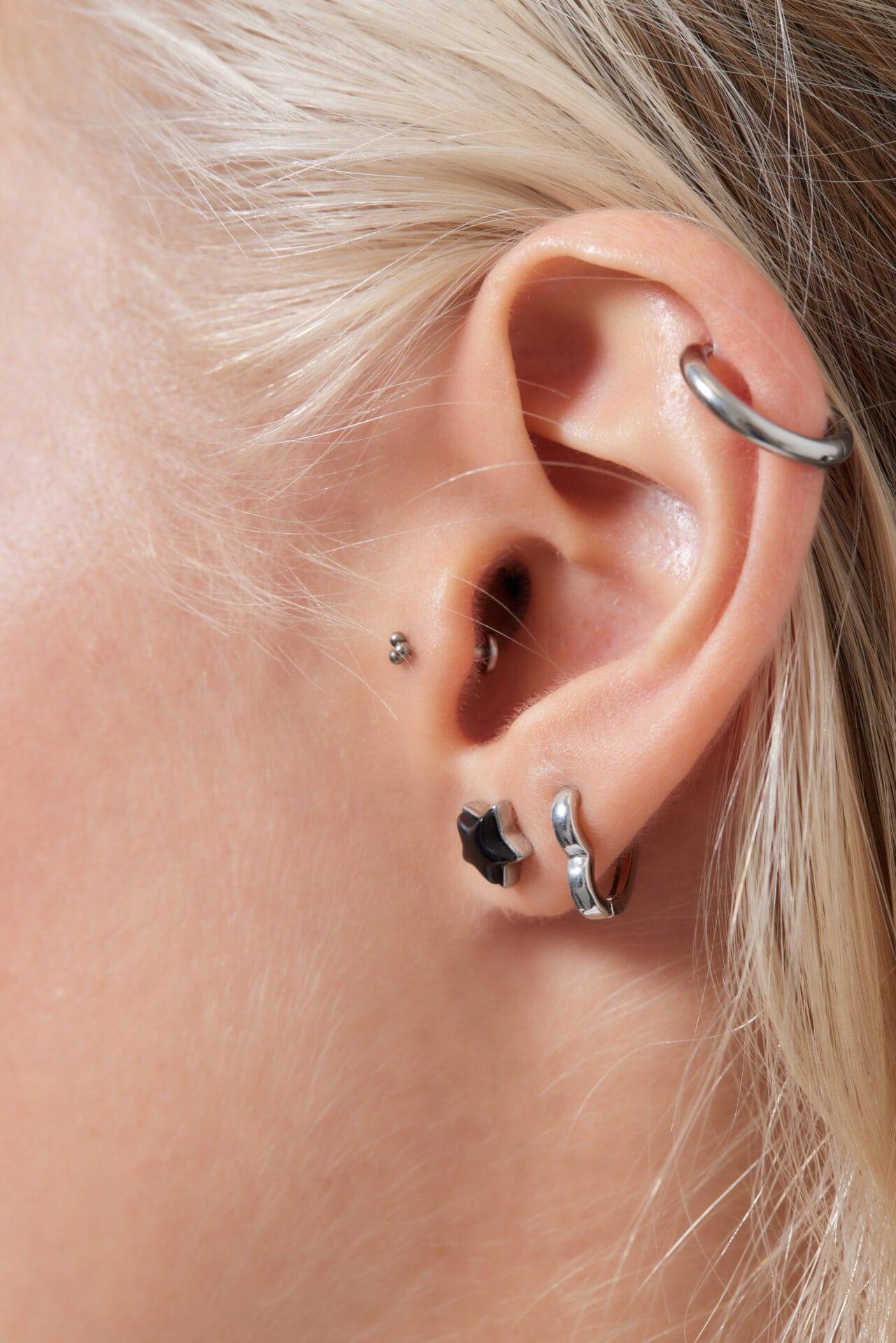
Continuing education is important for piercers to stay up-to-date with the latest techniques, trends, and safety protocols in the industry. It allows piercers to expand their knowledge and skills and provide the best possible service to their clients.
There are many different types of continuing education opportunities available for piercers. These can include workshops, seminars, conferences, and online courses. These opportunities allow piercers to learn from industry experts and gain valuable insights and knowledge.
Resources for piercers seeking professional development include professional organizations such as the Association of Professional Piercers (APP), which offers educational resources and certification programs. There are also online forums and communities where piercers can connect with each other and share knowledge and experiences.
In conclusion, piercing is a popular form of self-expression and body modification that has been practiced for thousands of years. Proper technique is crucial when it comes to piercing, as improper technique can lead to a variety of risks and complications. Advancements in technology have led to the development of modern piercing tools and equipment that make the process safer and more efficient. Choosing the right jewelry for a piercing is essential for both comfort and healing. Proper skin preparation, numbing techniques, and placement are also important aspects of the piercing process. Aftercare is crucial for a successful healing process, and piercers should be knowledgeable about common piercing problems and how to address them. Experienced piercers have the opportunity to expand their skills and knowledge through advanced techniques, and continuing education is important for all piercers to stay up-to-date with industry standards and best practices.

